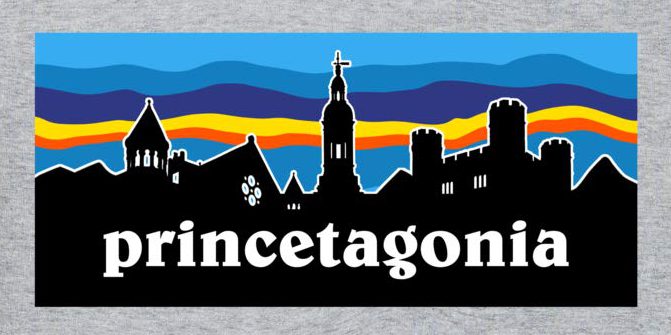Park planners, environmentalists, and more utilize different models to analyze the amount of human impacts in regions both quantitatively and qualitatively.
Example method 1
Looking at various greenhouse gases to analyze the impact of traveling tourists. Variables are listed on the leftmost column, and how they are measured is in the second from the left.


Example Method 2
Analysis based on the amount of human disturbance using a human disturbance index. The following tables lay out the “metabolic state” (extent of urbanization) as well as their descriptions that was measured.
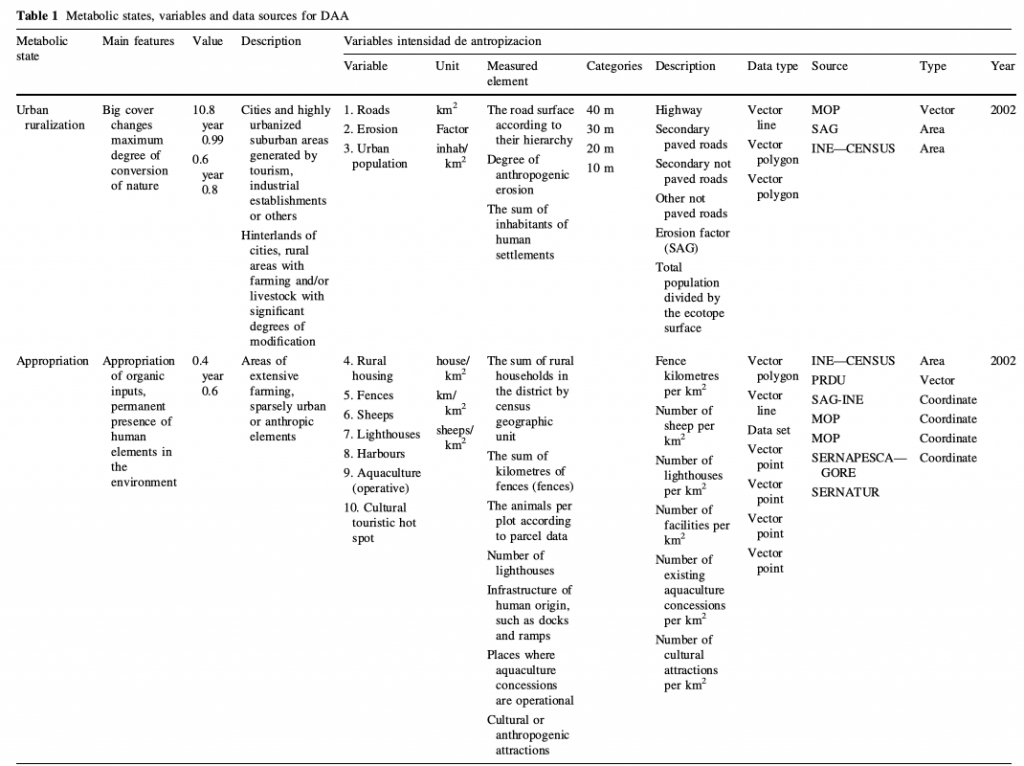
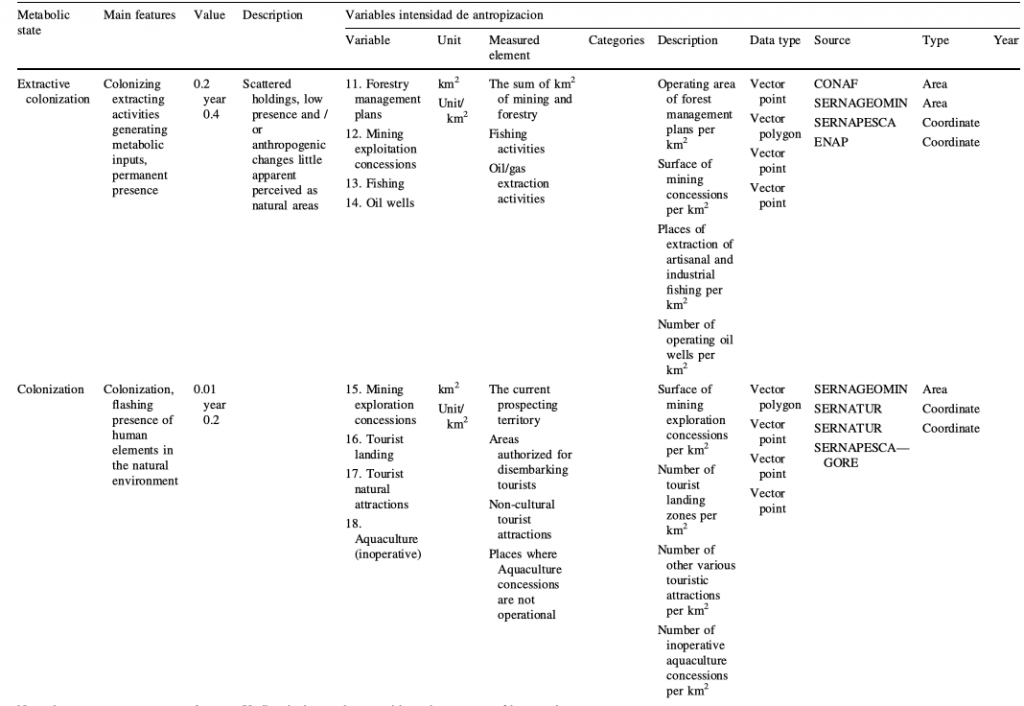

Areas of analysis (Insostroza, 2076-2078)
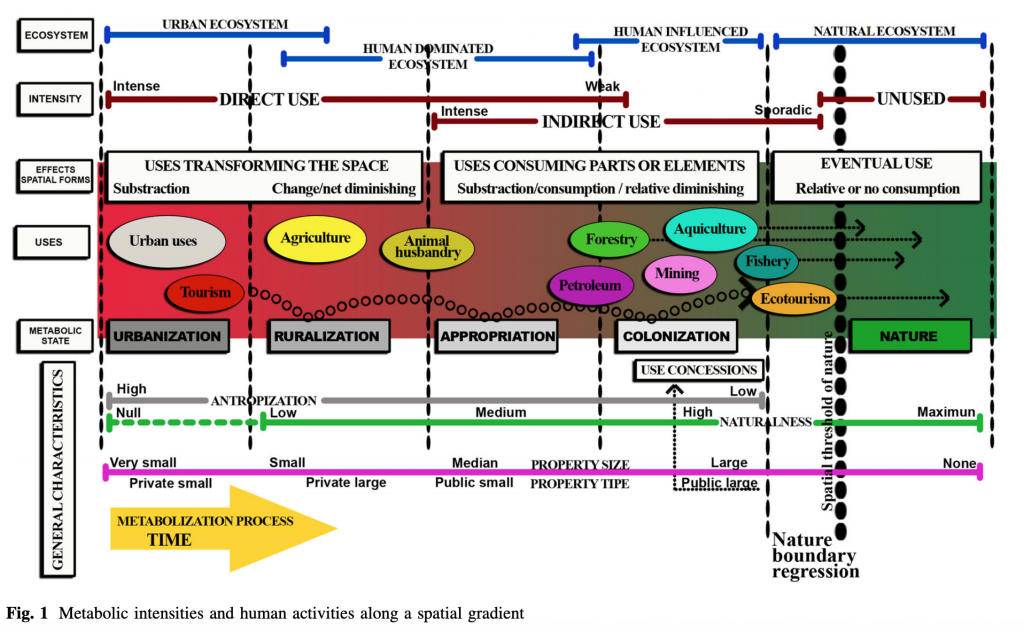
Depending on the different types of analysis, the results can end up being drastically different.
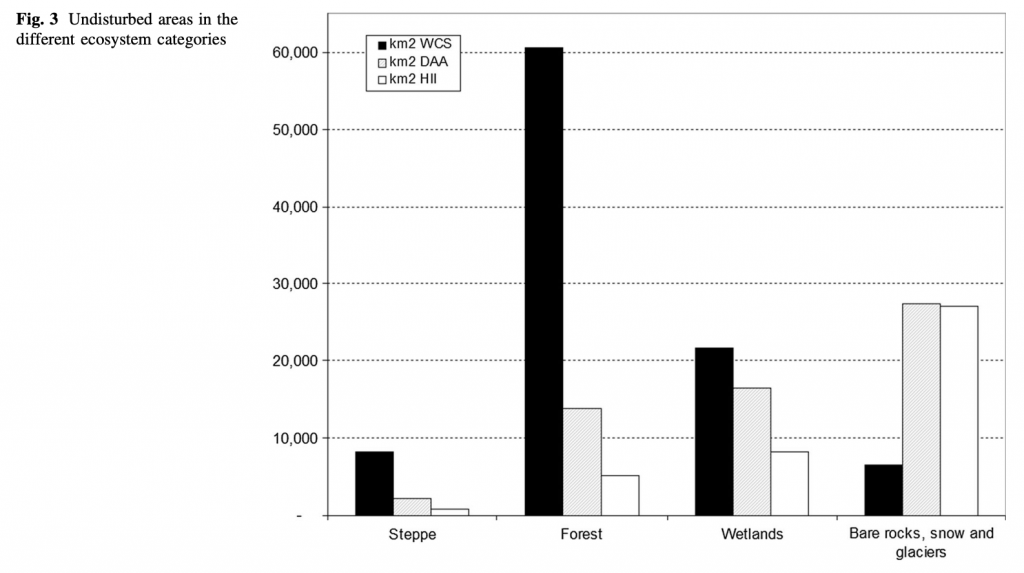
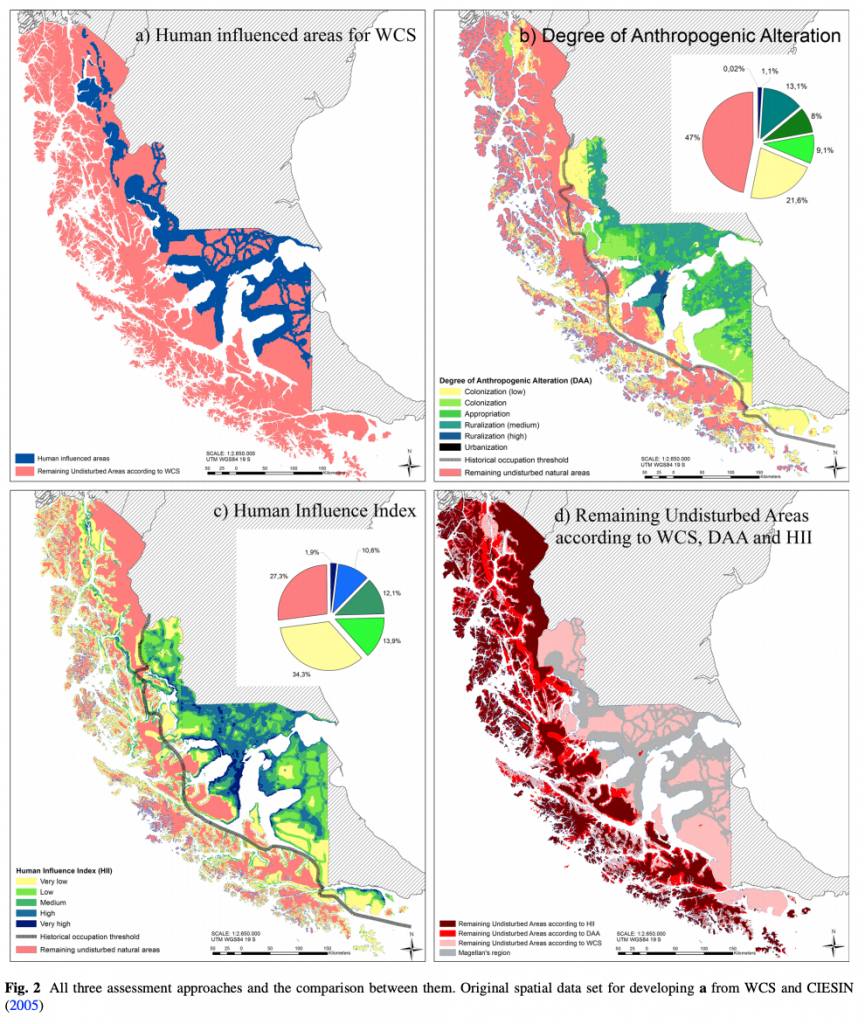
Further Readings
Aamir, Alamzeb, Elsherbini Elashkar, Elsayed, Imran Qureshi, Muhammad, Mohamd Shoukry, Alaa, Nik Mahmood, Nik Hasnaa, Rasli, Amran Md., and Zaman, Khalid. “Measuring the ecological footprint of inbound and outbound tourists: evidence from a panel of 35 countries,” Clean Technologies and Environmental Policy, no. 21 (2019): 1949-1967.
Inostroza, Luis, König, Hannes J., and Zasada, Ingo. “Last of the wild revisited: assessing spatial patterns of human impact on landscapes in Southern Patagonia, Chile.” Reg. Environ Change (2016): 2071-2085.
